As one of the most well-known athletes in the world, Diego Armando Maradona touched many lives in his career. Few athletes in the world, let alone football players, have combined silk and steel quite like the Argentine No. 10.
His life, though, was as colourful and controversial as he was creative. Think you know about Maradona? Here is a list of some of the most special moments in his life. A breakdown of some of the biggest moments that helped to make one of the most careers – and lives – ever lived.
The Birth Of A Legend
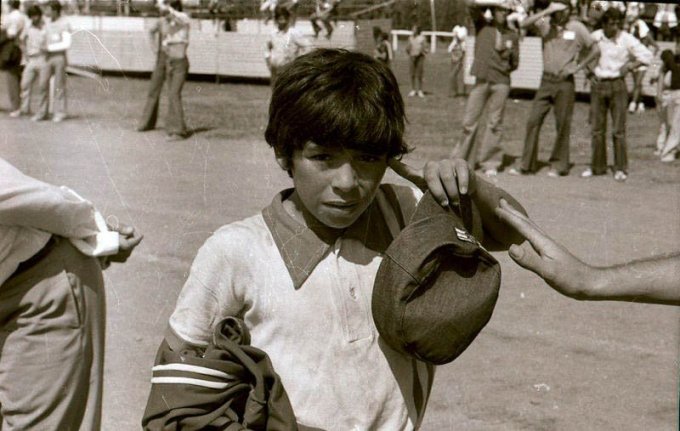 Maradona was born as Diego Armando Maradona, and came into the world on the 30th October, 1960. Born in the Lanus province of Buenos Aires, Maradona grew up in relatively austere conditions, with poverty rife throughout the country. For a young Diego and his family, life was very hard.
Maradona was born as Diego Armando Maradona, and came into the world on the 30th October, 1960. Born in the Lanus province of Buenos Aires, Maradona grew up in relatively austere conditions, with poverty rife throughout the country. For a young Diego and his family, life was very hard.
The first son of a family of seven children, Diego had three older sisters and two younger brothers who made it into the professional ranks, too. His Italian-Guarani heritage ensured that Maradona was born into the melting pot of Buenos Aires, ready to compete to survive.
Moving To The Capital
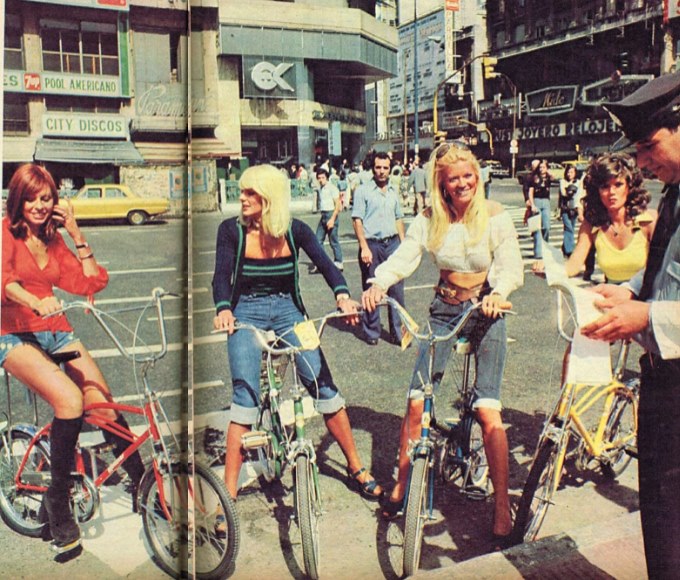
Growing up in the small area of Esquina, the north-eastern province of Buenos Aires, Maradona was soon brought to the capital city to try and make a living. At the age of three, he was given his first football to play with and, for both player and ball, a lifelong relationship was developed overnight.
Maradona grew up in challenging conditions, with his family one of many in the Buenos Aires area that lived with little in terms of economic opportunity. For the family, though, the skills of a young Maradona could be the golden ticket to success.
Estrella Roja
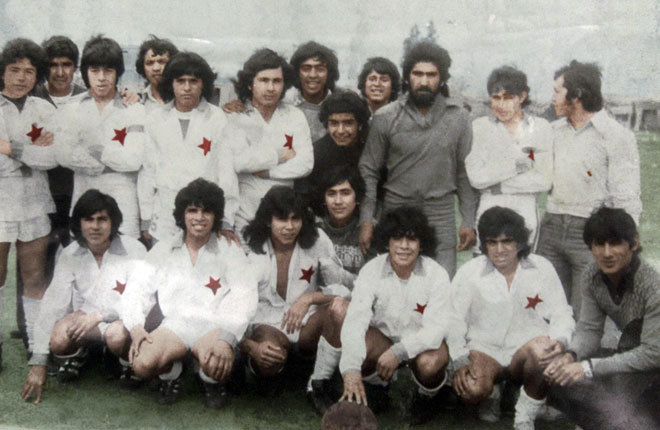
As a youngster, Diego was capable of playing with both feet and showed an immense balance that came from his unique build. Stocky and strong with the centre of gravity of a much thinner player, his powerful legs gave him the ability to explode beyond players and produce moments of sheer infamy.
At age eight, he was playing for his local neighbourhood side in Estrella Roja. Quickly, though, his talent became apparent and he was picked up by a local side in Argentinos Juniors. While not the same size of club as Boca Juniors, the club of his heart, this was an opportunity that Diego could not pass-up.
The Signs Of Maradona Emerge
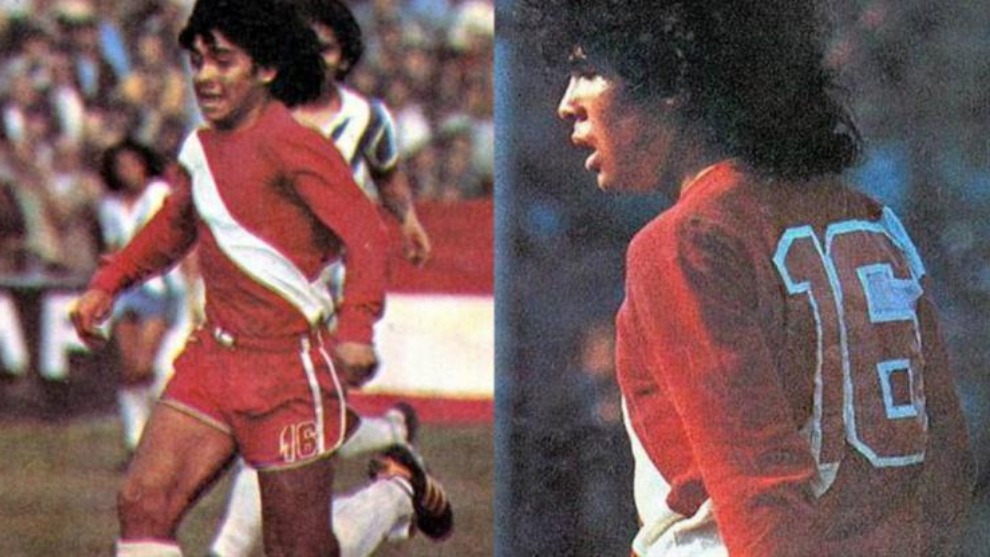
However, for the youngster, his first few years in the youth teams of Argentinos Juniors were sublime. He immediately settled into life and became a key part of the Juniors sides that would do so well at youth level. Aged 12, though, Maradona was acting as a ball-boy for a senior game for the first team.
At a half-time interval, Maradona was given a ball and told to wow the crowd. And wow the crowd he did; many anecdotes exist of his ability on the ball, with most fans shocked at his immense ball control and skill.
Los Cebollitas
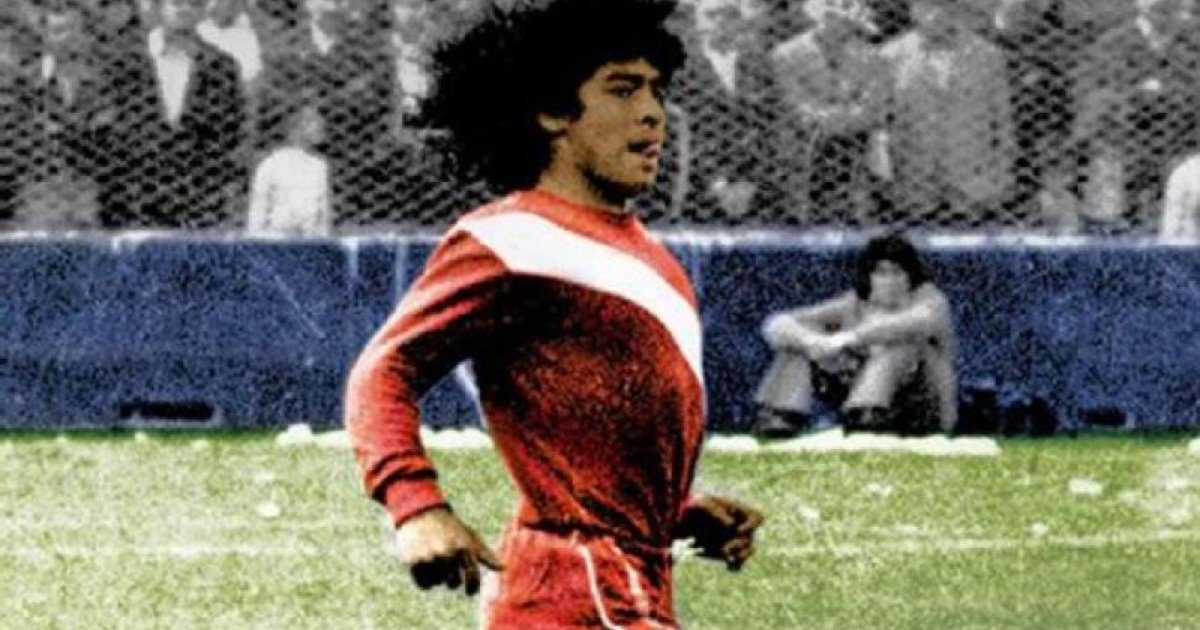
As part of the youth team at Argentinos, he was known as part of Los Cebollitas; the ‘Little Onions’. It was at this point that Maradona showed his immense ability, becoming comfortably the best player in the team and the key face of the entire playing side.
Maradona continued to wow the crowds, and he played a major role in the youth team going on a whopping 136-game unbeaten streak. For much of his youth career, then, young Diego was the standout talent in Argentina.
Coming Of Age
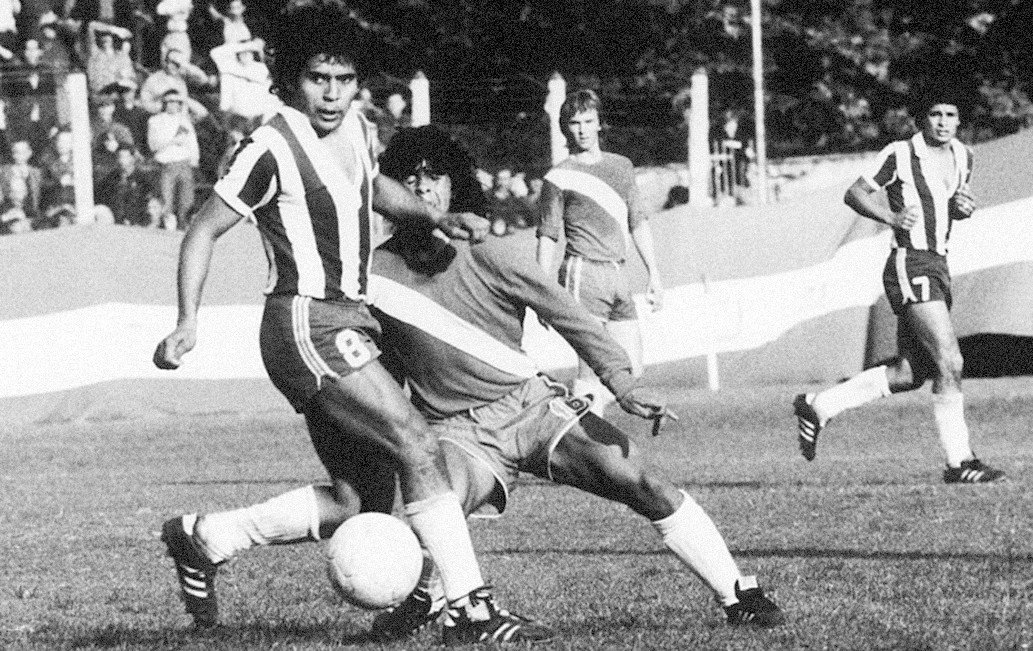
Fans of Argentinos had ben asking to see the youngster take to the field as a professional, and on the 20th October, 1976, it finally happened. Maradona came onto the pitch 10 days before he turned 16 years of age, making him one of the youngest players of all-time.
Coming on in his debut, Maradona was up against the tough but combative Juan Domingo Cabrera. Known as a fearsome competitor, Maradona showed the senior player little respect, putting the ball through his legs in a classic ‘nutmeg’ that instantly wowed the crowd and fanned his growing legend.
The First Goal
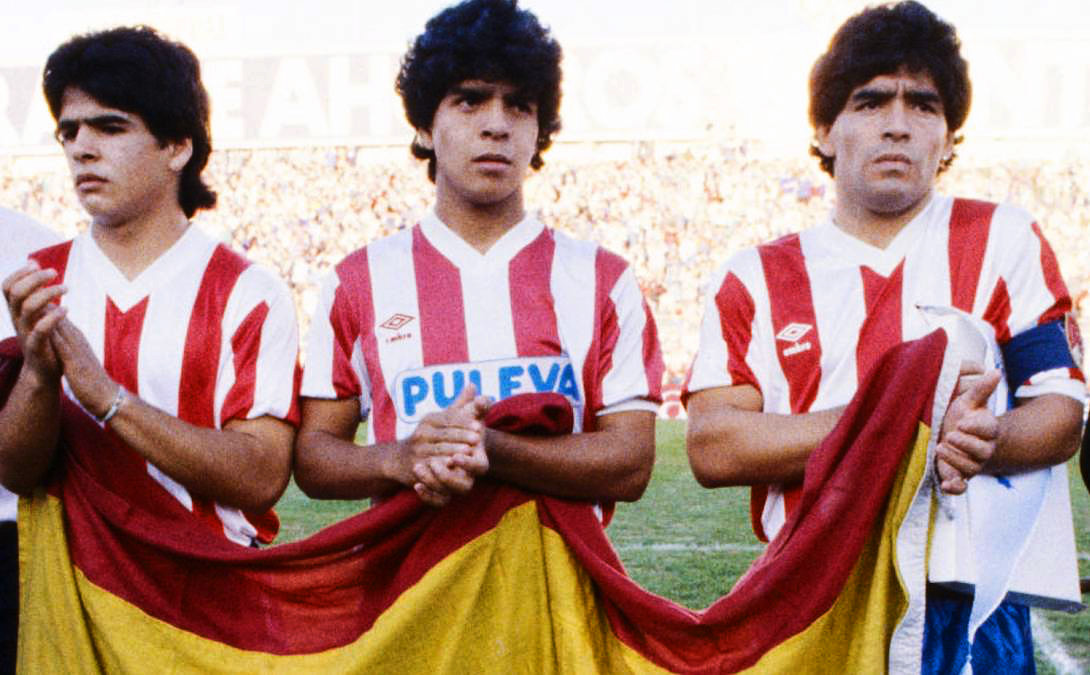
For Maradona, the first goal came shortly after his debut. Having turned sixteen just two weeks before a game against Primera Division outfit Marplatense, Maradona took to the field yet again in a Juniors uniform. It did not take long for the ball to come to him, and the youngster rattled in a tidy finish to earn his first goal in senior football.
Having made his debut just days before, now Maradona was among the youngest scorers of all-time and, despite being a fledgling player, was a growing name within the Argentinos Juniors dressing room. He had arrived.
International Honours
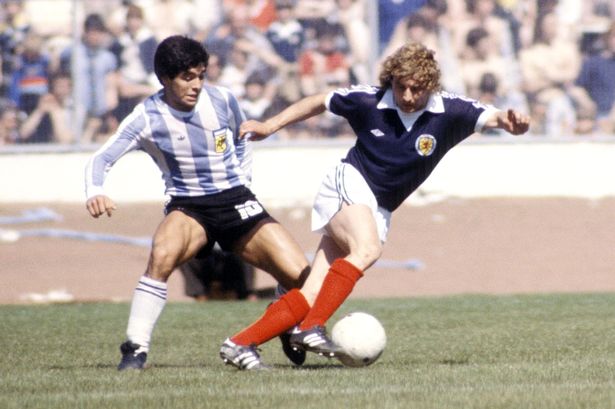
Having made his debut at the age of 16 in club football, Maradona did not wait long to play his first international game. Indeed, his debut arrived at the age of 16, when he played against Hungary on the 27th February 1977. For one so young, it was a truly special moment; a chance to show the world his absolutely sublime talent and his ability to bring the football under his own special kind of control.
However, the 1978 World Cup on home soil would be an early sore point for Maradona; he missed out for being ‘too young’, according to coach Cesar Luis Menotti.
The 1979 Youth World Championship

Determined to get back into the national side, though, Maradona pushed on and dominated the 1979 Youth World Championship. He scored six goals in six games, and was the Man of the Match in the 3-1 victory over the Soviet Union in the Final, earning himself the Golden Ball.
Having established himself at club level, a young Maradona felt like it was time to start playing at an international standard. Having impressed so much at this level, too, it would be hard for any coach to keep the young star out of the first-team any longer.
International Duck Broken
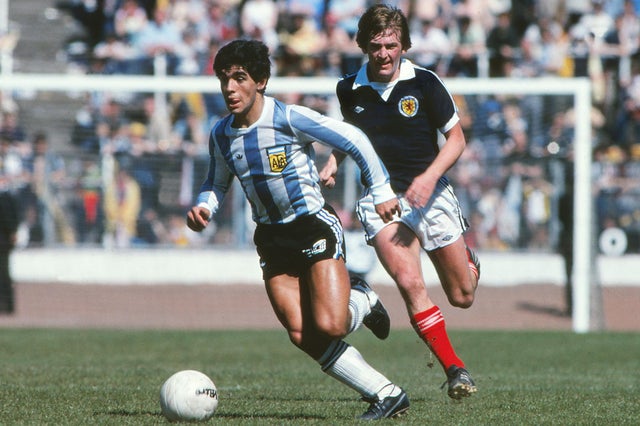
Having enjoyed his debut so young, Maradona had to wait until 1979 to score his first goal in the famous blue and white of Argentina. He took part in a game against Scotland at Hampden Park, Glasgow, and scored in a 3-1 victory. Maradona was sublime, enough to earn him a place on the national team side for the 1979 Copa America.
He played in a 2-1 loss against Brazil and also scored in a 3-0 win over Bolivia, scoring the third goal. From the young kid dominating youth teams to the young kid dominating senior teams, Maradona would become a mainstay.
The Greatest Of All Onions
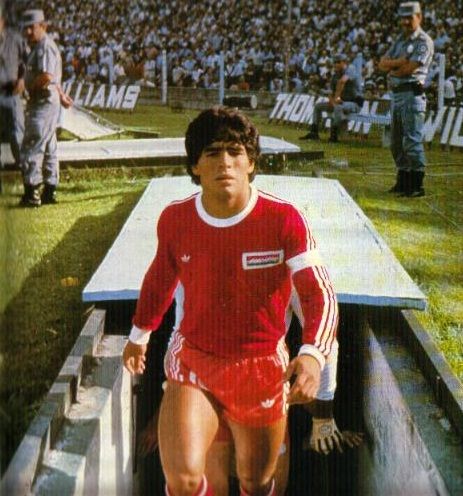
Across a five-year period at Argentinos Juniors, though, Maradona was a key player. Indeed, if you go to their stadium today, known as the Estadio Diego Armando Maradona, you will see a plaque which reads that “the best player of all-time made his career debut in this stadium.”
It’s a telling tribute to a player who is unquestionably the greatest to wear the shirt of Argentinos Juniors. In a five-year spell with the club, Maradona scored 115 goals in just 167 games. As the fiercest young player in the league, a move was inevitable.
Arriving ‘Home’ With Boca Juniors
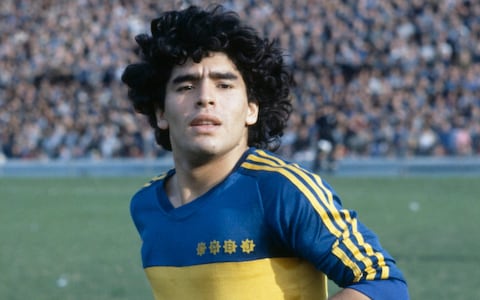
In 1981, the move finally came for a player who could be held back no longer. Maradona was subject to a $4m bid from Boca Juniors, the club he had supported since childhood. Despite River Plate offering a better salary, Maradona had set his heat on wearing the iconic blue and yellow kit of Boca.
He signed on the 20th February, 1981, and soon became a key part of the Boca Juniors team. On his debut, he scored a brace (two goals) against Talleres de Cordoba, in a rampant 4-1 win that set the tone for a career.
Superclasico Superlatives
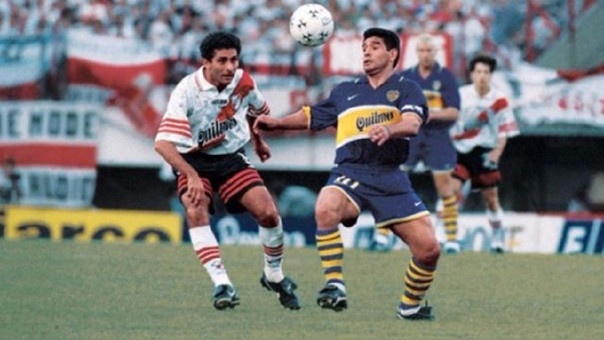
For Maradona, though, the biggest game that he would play would come against River Plate in the Superclasico. As arguably the biggest game in all of Argentine football history, and South America as a whole, Maradona took to the field in the 10th April showpiece game.
Boca would host their eternal rivals at La Bombonera, the ‘Chocolate Box’, and he scored a wonderful goal in a rampant 3- win. It was his first season with the club of his heart, and Maradona emerged with the league title, being raised to the skies by loving supporters.
The Signs Of Stress
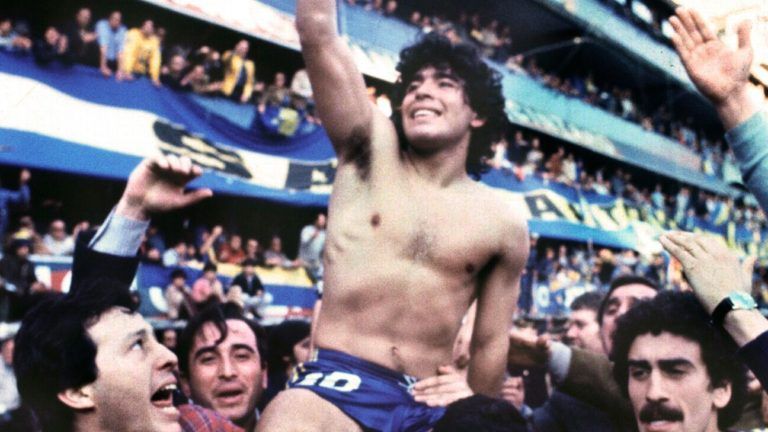
However, for Maradona things were not perfect in his life. Despite starring for his beloved Boca and playing for the national team, Maradona was not in the best frame of mind. Regular disputes with the management at Boca left him annoyed, and the team did not perform to the same standard in the years to come.
Indeed, the 1981 domestic title is the only title that Maradona won in his Argentinian domestic playing career. For one so decorated, domestic honours simply didn’t arrive.
The 1982 World Cup
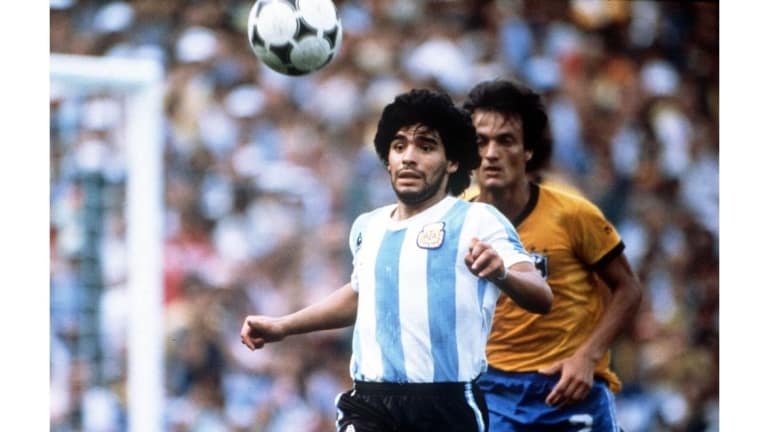
Maradona arrived in the summer of 1982 in great form individually, though his club had missed out on further progress domestically. When the tournament came around, Maradona was in discussions with FC Barcelona to move to Spain; the location of the World Cup itself.
His first game in the tournament, though, was a huge surprise; a 1- loss to an unfancied Belgium side. Played in the Camp Nou, it was a negative taste of first action on the hallowed turf and, in truth, set the tone for his career to come.
Tensions Grow
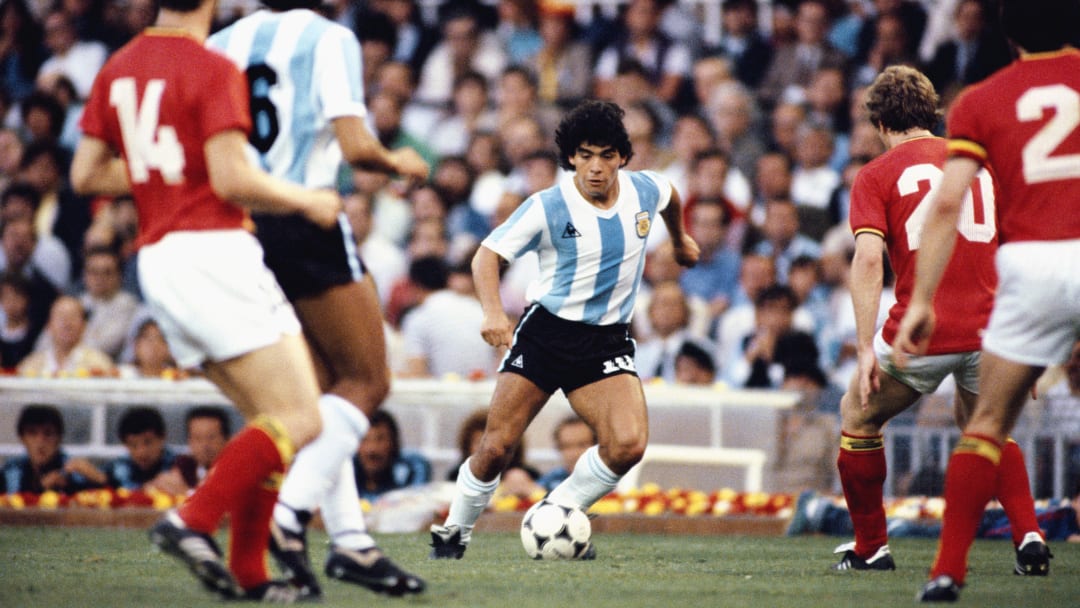
The 1982 Argentina side was undoubtedly talented, but there was severe tension. Convincing wins against Hungary and El Salvador done nothing to limit the tension, with star players and experienced players at odds with the younger, more care-free talents who had arrived since the 1978 triumph.
Maradona played in five matches in the tournament, and scored twice in the win over Hungary. However, his temper took over in a 3-0 defeat to Brazil when he was sent off for retaliating against a tackle made by Batista, the Brazilian.
It was, though, for Maradona, a clear sign of where he had to improve. It was also, sadly, the sign of trouble to come.
Claudio Gentile
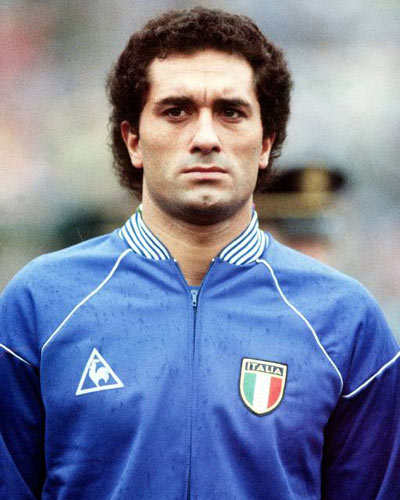
Maradona had gained a reputation as being almost impossible to mark, with even the best defenders in South America struggling to keep pace with the young star. However, his first real moment of genuine control being removed from his game came in the loss to Italy. In this game, Italian defender Claudio Gentile was his marker, and the Italian used every trick in the box to break Maradona’s concentration and spirit.
For a young Diego, now in the European game, such treatment would become a common occurrence moving forward.
World Record Fees
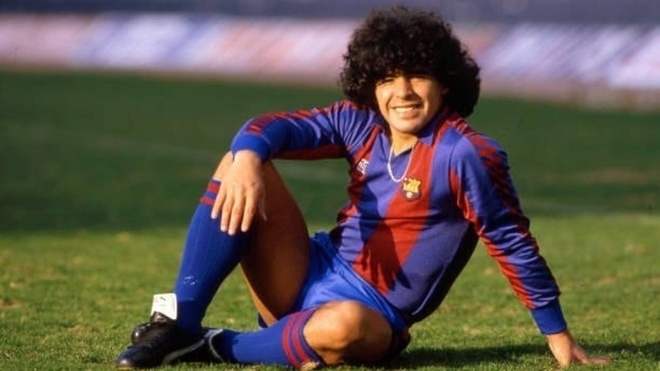
For Maradona, breaking records was now becoming a common part of his day-to-day existence. However, when FC Barcelona broke the world record to sign him in 1982, a fee of $7.6m, it was seen as a major step up in pressure for the youngster.
The fees, though, were seen as justified. Still in his youthful development stage of his career, there was no doubting that Maradona had much more to give as a player moving forward. For Barcelona, it was hoped that he would be the key face of a team that would start to dominate Spain.
Debut Season In Spain
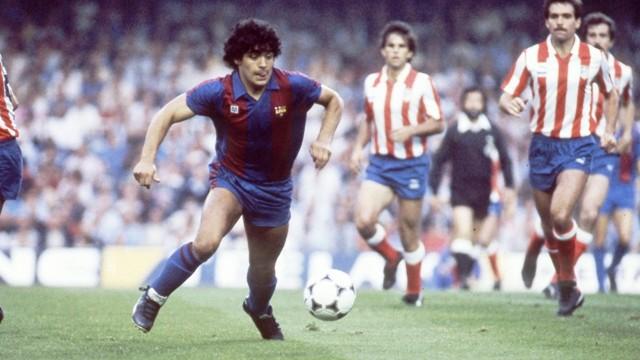
Under the watch of Cesar Luis Menotti, Maradona was major part of the Spanish side that won the 1982 Copa del Rey. Indeed, they beat Real Madrid to win the trophy, and also defeated Athletic Bilbao in a Spanish Super Cup match.
In his debut season, then, Maradona enjoyed success with the Catalan giants. Having scored 28 goals for Boca Juniors in just 40 games in his only season there, Maradona scored 23 goals in his first 35 games for Barcelona. However, for a player of such immense craft and quality, there were already problems beginning to brew off the pitch.
The Santiago Bernabeu Applause
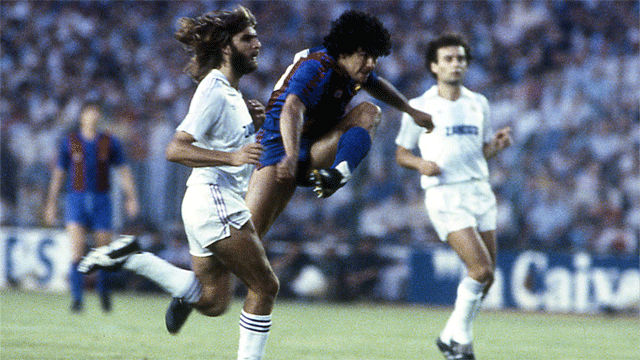
Few players who wear the blue and red of Barcelona can go to the home of Real Madrid, the Santiago Bernabeu, and receive applause. When Maradona arrived on the 26th June in 1983, though, Barcelona won away in the most convincing of fashions. Key to the win, though, was Diego.
The youngster dominated the game, playing a key role and scoring a crucial goal. So good was his performance that he was applauded by Madrid fans at full-time. Few Barcelona players have received such an accolade, making this a truly momentous moment in the clubs history.
The Beginning Of Difficulties

However, for Maradona the problems started in his first season in Spain. Illness had caused some problems, but a handful of controversial moments in his early career had fans and coaches worried. Indeed, he suffered from hepatitis that put his health at risk, and he also suffered a broken ankle in a hot tempered game against Athletic Bilbao.
The injurer was none other than Andoni Goikoetxea, who was known as the ‘Butcher of Bilbao’. The injury was serious, and could have risked long-term issues had the treatment not been handled so well.
The 1984 Copa Del Rey Riot

Known as a tremendous attacking player, Maradona was also famed for his fiery temper. Many European players tried to play on this, trying to bring out the worst in the little legend. However, the worst game after ‘The Butcher’ made another attempt to injure Maradona in the 1984 Copa del Rey, held at the Bernabeu.
Maradona was abused all game by the crowd, and also by Miguel Sola. When the full-time whistle went, Bilbao were winners, 109. It was not, though, the end of one of the most damning moments of Maradona’s early career.
The Riot Continued
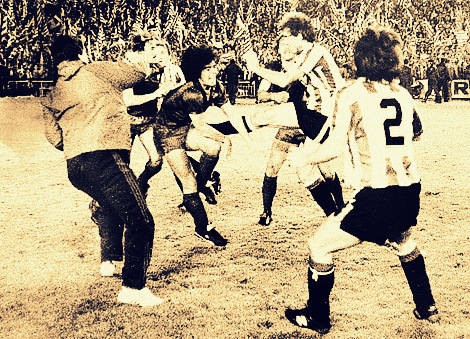
Getting up from the floor, Maradona confronted Sola and they two exchanged harsh words. Within a few moments, both squads were involved in a full-on brawl. Sola insulted Maradona’s heritage, and Maradona headbutted the Spaniard, elbowed another player in the face, and sent a flying knee into another player, knocking him out!
The Bilbao team attacked, including Goikoetxea, who landed a kick into the chest of the Argentine. The brawl exploded in front of an audience of over 100,000 fans, including royalty, and was one of the most viewed events on national TV for the year.
The End Of Barcelona
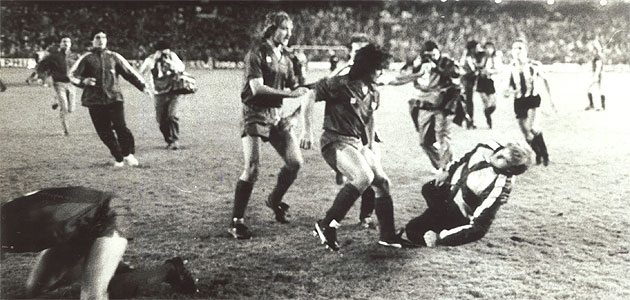
However, despite the madness that ensued afterward, Maradona was essentially consigned to the exit not only from Barcelona, but from Spain. The player was seen as not worth the risk any longer, and Barcelona set up the opportunity for an exit after just two years in Spain.
In 1984, then, the time had come: Maradona demanded that the club facilitate his exit an arrange for him to move to a new club. In two years in Spain, Maradona scored an impressive 38 goals for Barcelona in just 58 games. Who knows what might have happened without the violent incident in 1984?
A New World Record
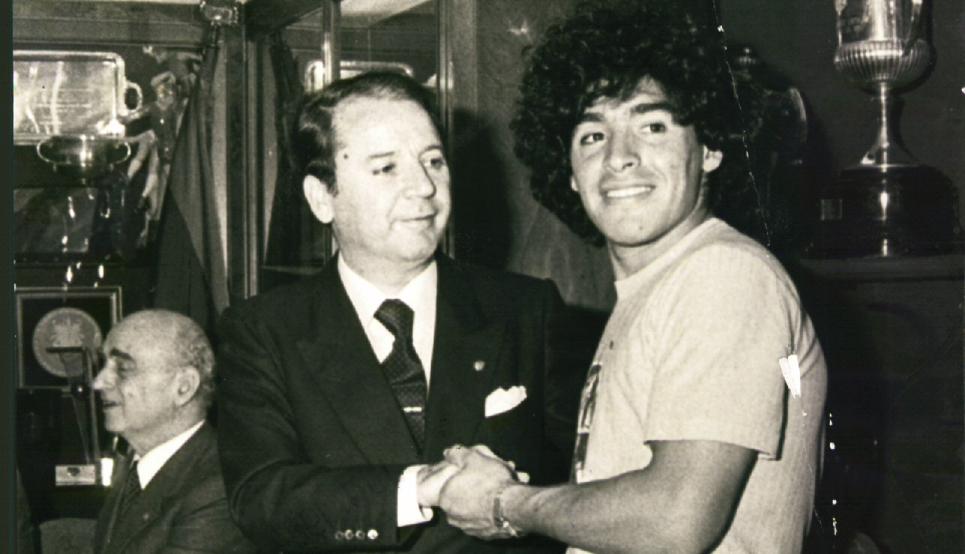
Despite the violence that had shadowed his career in Spain, Maradona was still seen as a ‘dream’ player by many clubs. When he came on the market, fans of all major clubs wanted to see the Argentine arrive and take part in a game for their club.
The lucky team that won out, though, was a surprise: SSC Napoli had decided to invest a whopping $10.48m into the Argentina international. The aim was simple: build a team around Maradona, and turn Napoli into a team that could compete with the northern elite.
The Saviour Arrives
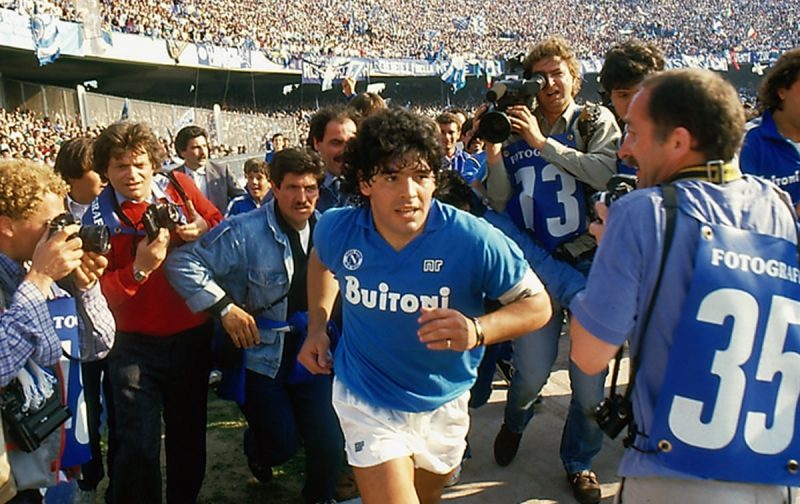
When Maradona first arrived in Naples, he was presented as a player to the fans at the massive Stadio San Paolo. Maradona came onto the field in front of some 75,000 fans, and was roared on with mass approval from the stands.
Indeed, local papers noted that despite the city lacking anything like a political presence, proper housing, employment, or even good sanitation, nothing mattered anymore. Why? Because Maradona was here, and with him he would bring the most famous of wins to the city of Naples.
Northern dominance, then, would finally be challenged properly.
The Challenge Laid Out

When Maradona arrived in Naples, the Italian Serie A was a league dominated by the northern and central giants like AC Milan, Internazionale, Juventus, Torino, and the Roman teams of Lazio and Roma. For Napoli, then, a team with only a handful of domestic cups and no league titles to their name, the challenge was made clear.
For Maradona, the aim was to take a club and a city that was immensely proud of its heritage to the very peak of the Italian game. With much to achieve and such illustrious rivals, though, would Maradona be enough?
The Captain Of Naples
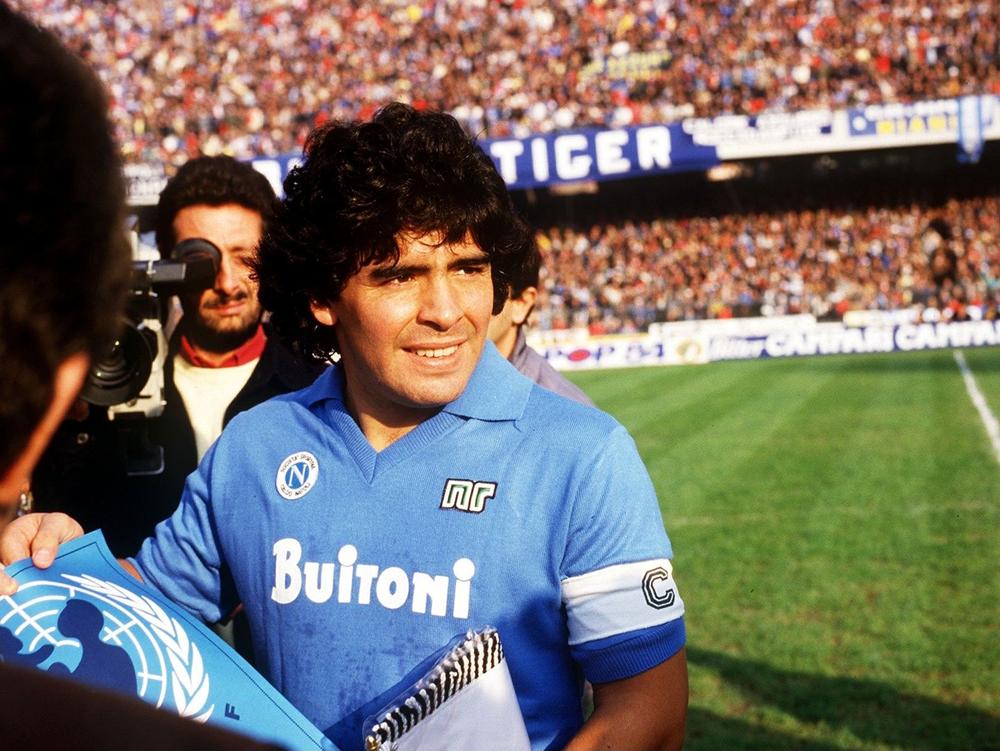
Quickly after arriving at the club, his influence and his quality was clear for all to see. Nobody would argue that Maradona was anything but the face and leader of the team; so much so that club captain Giuseppe Bruscolotti was happy to give him the ‘keys’ to the first- team, as it were.
Being made captain and become the most prominent player in the clubs history, Maradona soon showed that he could make good on the immense pressure on his shoulders. No player in history would have taken on what Maradona had; so, could he handle it?
Conquering The Divide
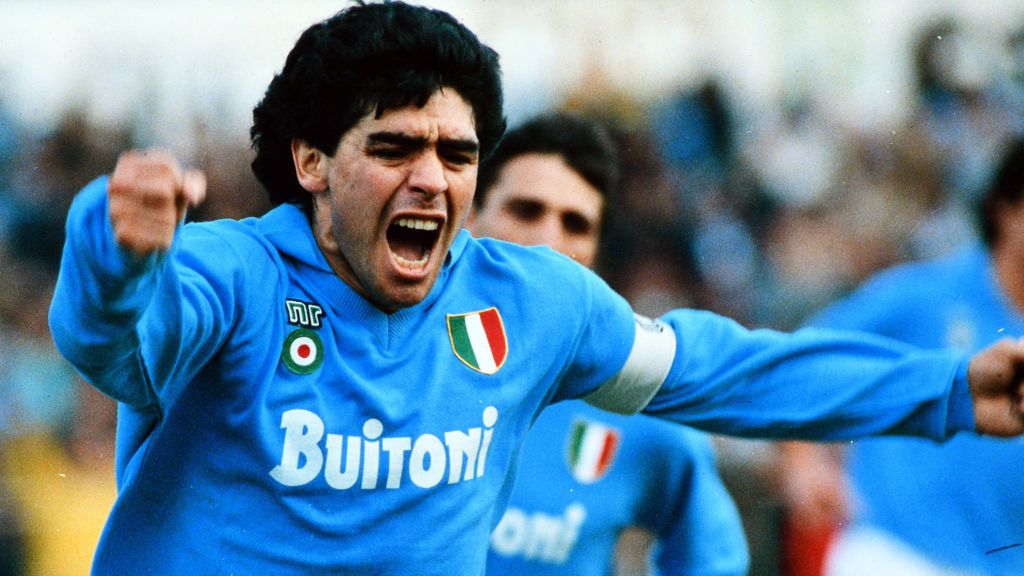
When arriving in Italy, Maradona was entering a period of Italian political dispute where the north and south were very much divided. The economic divide was massive, with much of the south being left to rot while the northern parts of the country prospered.
For Maradona, then, the aim was to not only win a title but to take a city and a part of a nation that felt totally shut off from the rest of society. Maradona was supposed to make Napoli relevant from a sporting, cultural, and even economic perspective. No pressure, then!
Breaking New Ground

In his first seasons in Italy, Maradona began to make huge inroads. His first season brought an impressive 17 goals from 36 games, and he scored 13 in 31 in the following season. However, it would be some time until Maradona could show his truly prolific best in Italy.
Remember, though, that this was a time period where Italian football was easily the most austere league in the world in terms of goalscoring. To score over 10 goals in a season for even the best players was seen as a huge achievement given the standard of defenders.
The 1986 Fifa World Cup
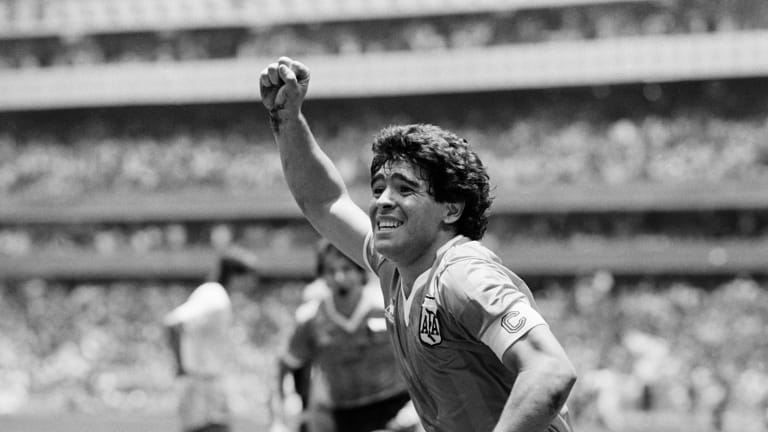
However, while Maradona was making a name for himself in Italy, the 1986 FIFA World Cup in Mexico offered a unique opportunity. Diego was now one of the leading names in the national team, and he headed off to the 1986 tournament as the captain of the national side.
For Maradona, this was the chance to show the world what he was made of as a player and as a man. No players in the world had really conquered the stage that Maradona was about to enter in the way fans in Argentina hoped he could. Could he do it?
Opening With Aplomb
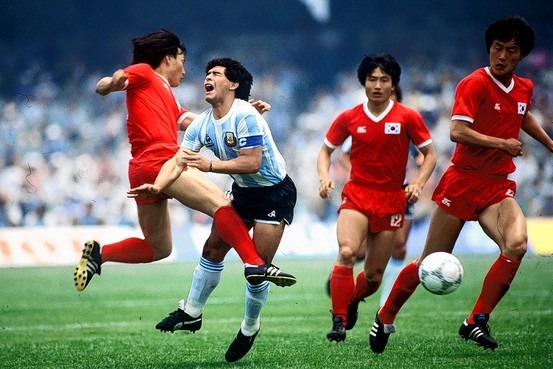
The opening game for Argentina came against South Korea in Mexico City. Up against a tough Korea side who had grown as a defensive unit, there were fears that the game would be stodgy and poor. However, Maradona, who would contribute five goals and five assists across the tournament, was involved in three goals against the Koreans in the first game.
Argentina, then, were up and running; and crucially the experience-versus-youth divide that had ruined the 1982 World Cup was no longer present. This was a team unified in making its name heard.
Opening The Account
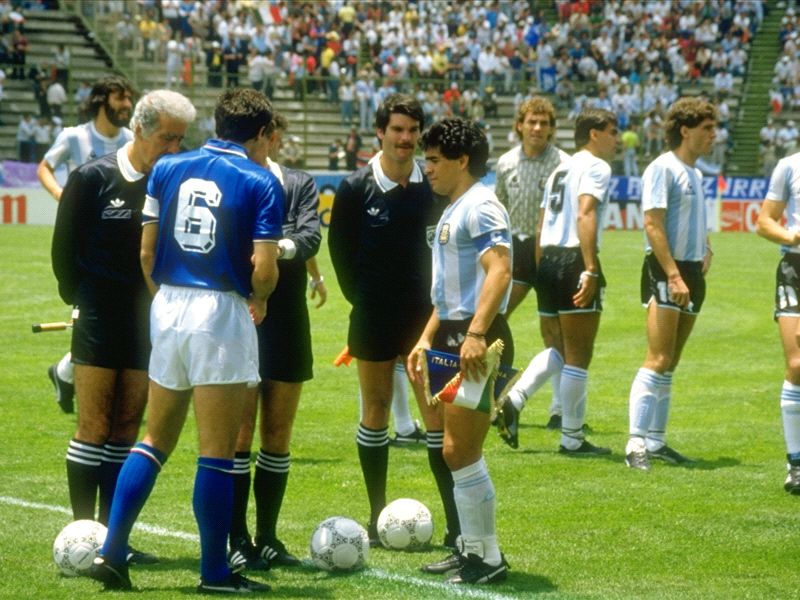
With a trio of assists against the Koreans, then, Diego was on fire and was laying on goals for his teammates with consume ease. However, his first goal came in the match-up against Italy. Given how he had been treated by the Azzurri defense just four years before, this was like a new player.
Maradona was composed, confident, and took the punishment dished out with total grace and ease. He scored a crucial goal, and set himself up for the kind of run that could establish Argentina as one of the most likely winners moving forward.
An Old Enemy Vanquished

After making it out of the group stage, Maradona and co. would meet the famously strong Uruguay in the first knockout round. Having found Uruguay a tough nut to crack in the past, the hope was that Maradona could help his team find the guile needed to overcome a stodgy, aggressive foe.
They did with relative ease, though, with Argentina coming out on top in a tough but well-enjoyed encounter. This left Argentina with a date with destiny: they would be playing England in the quarter finals; a nation they had recently been at war with.
The Hand Of God

Unless you have just found out about football, you likely already know this one!
Maradona would take on England in a pulsating encounter, with the sapping heat and the shocking pitch making it a tough game. England were typically aggressive, with their agricultural defenders and midfielders taking pleasure in booting Maradona up and down the pitch.
However, from a set-piece, the ball was floated into the box. Maradona jumped with keeper Peter Shilton and, whilst moving his head to hit the ball, knew he would miss. Instead, he moved his hand into the ball, ensuring the ball went into the net. 1-0!
The Goal Of God
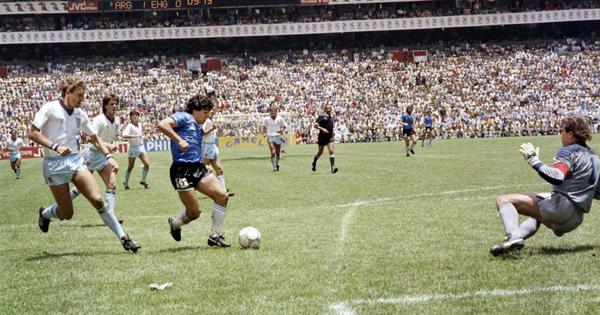
For all of the furor made over his first goal, though, the majesty of his second makes up for any moral quandaries. Picking the ball up in a tight position near the half-way line, Maradona swivelled away from a defender and began to parade through the England midfield and defence one after another.
Player after player would swing out with increasingly wild desperation, missing each time. Maradona, though, kept going and took 11 touches across the England half before rounding five players and the goalkeeper to slot into an empty net.
If his first goal was disputed, four minutes later he scored the goal dubbed the Goal of the Century by FIFA.
Continuing On With Glory
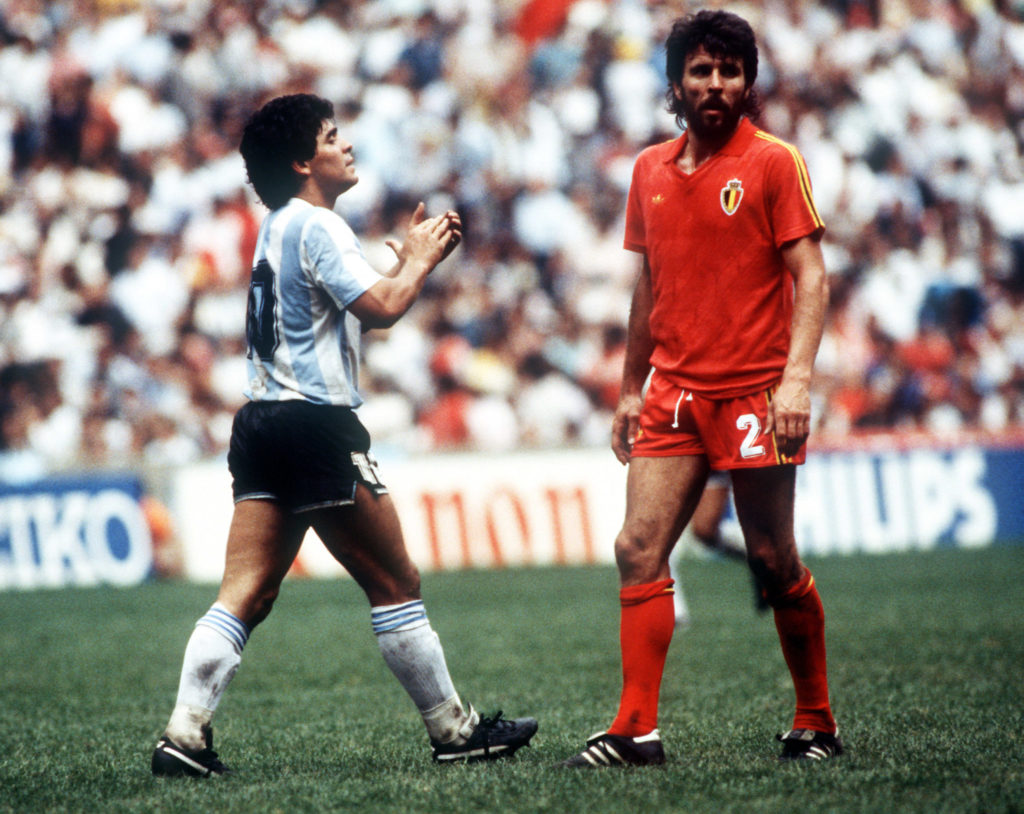
Now in the semi-finals after seeing England off 2-1, Maradona took part in a special match-up with a Belgium team he had underwhelmed against in 1982. IN this match, though, Maradona scored a brace to take his team all the way to the FIFA World Cup Final.
Having failed to fire in the previous tournament, Maradona outdone a very talented Belgium side with sheet grit, endeavor, and determination to eventually overcome the odds here.
Facing West Germany

As a national side, hearing you need to face off against West Germany is always a scary prospect. Facing off in the Azteca Stadium, 115,000 fans packed in to see if Maradona could produce one more rabbit out of the hat.
And, you guessed it, he did; in a marvelous 3-2 victory, Maradona laid on the winning goal after beating Lothar Matthaus in a due, passing the ball through for Jorge Burruchaga to become a national legend. Lifting the World Cup on the shoulders of fans and teammates, Maradona had done it: he had taken a war torn nation previously known for big stage bottling to the pinnacle of football.
Creating Legends Worldwide

Maradona came back to Italy in 1986 having taken his nation to the glory of the FIFA World Cup. Now, it was time to make good on his promise to turn Naples into a city to be feared and respected in the football world. To do that, Maradona began the 1986-87 season in earnest.
The season seen Napoli rise to the very top of the Serie A table, finishing the season on top after an exhausting season, winning the league with a 1-1 draw with Fiorentina. Having fulfilled his promise of world glory back home, Maradona was now providing his promise of domestic dominance in Italy.
A New Empire Is Born
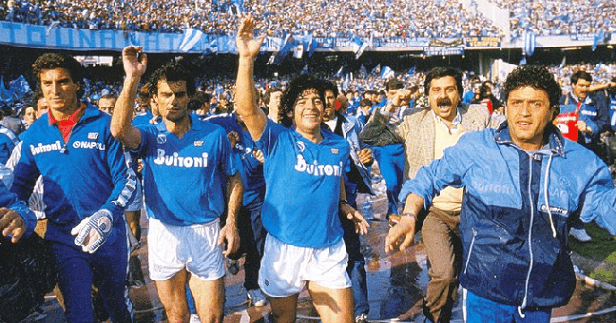
One of the most iconic images of the entire season, though, was the Napoli fans holding up coffins for both AC Milan and Juventus. The mock coffins were then burnt, with a message determining that “the other Italy has been defeated; a new empire is born!”
It was the fitting message given what had just been achieved. In an era of utter depravity in many parts of southern Italy, Maradona and co. brought incredible joy.
Continued Progress
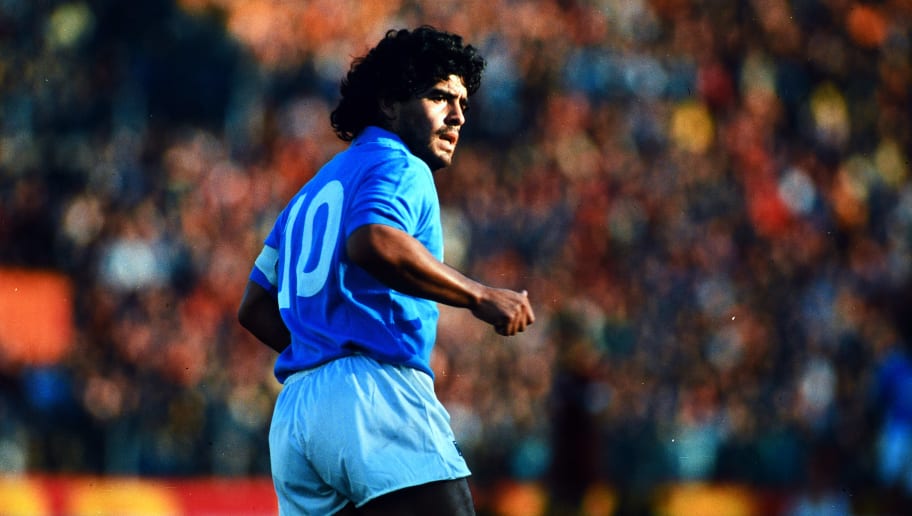
Though Napoli disappointed in the 1987 European Cup, they did win the Copa Italia in 1987, defeating Atalanta in the Final. Across two legs, Napoli scored four goals to win the tie 4-0. Alongside Bruno Giordano and Careca, Maradona formed one of the most exciting attacking teams in the whole of the country, if not Europe.
They also enjoyed a runner-up spot in the 1987-88 season, and came runners-up in 1988-89 to continue their presence as a domestic giant in the Italian game. A 1989 Coppa Italia loss took place, though, leaving Napoli worried they were becoming the bridesmaid of Italian football.
Champions Again
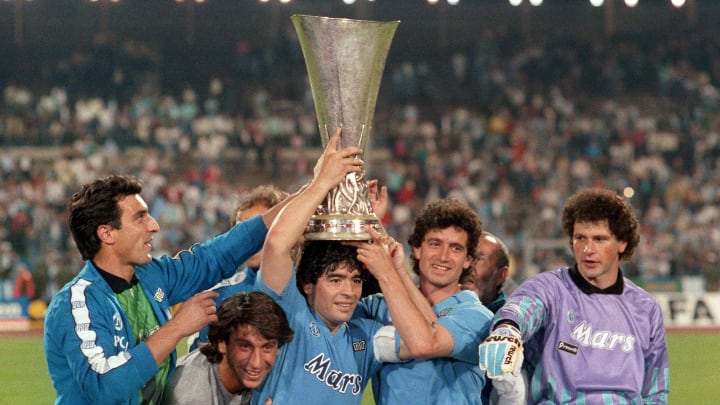
Maradona, though, was not having it; Napoli came out with a whopping title win in the 1989-90 season, as well as breaking European duck honors with a 1989 UEFA Cup win. In the Final, they defeated VfB Stuttgart in a pulsating 5-4 two-legged final. A 2-1 win in Naples was followed up by a 3-3 draw in Germany, leaving Maradona to lift the league title and the first European honor of the clubs history.
However, for fans, constant chatter about off-the-field activities and issues had created concern about how sustainable the future was.
Missing Out On Glory
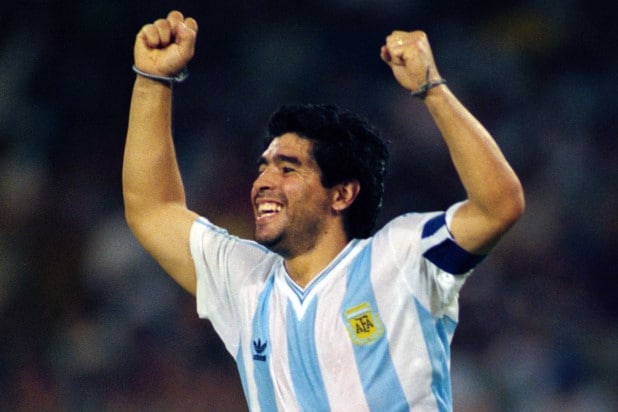
The summer of 1990 would see Maradona take Argentina to another FIFA World Cup, this time held in Italy. Though he suffered with an ankle injury throughout the tournament, Maradona still played well enough to take his team all the way to the Final once again.
Defeating Brazil, Yugoslavia (missing a penalty in the shootout) and then playing Italy in his ‘home’ stadium of the San Paolo, Maradona scored his penalty and sent Argentina all the way to the Final once again. However, they lost in the Final in Rome, losing 1-0 to a controversial penalty scored by Andreas Brehme in the 85th minute.
The End Of Naples
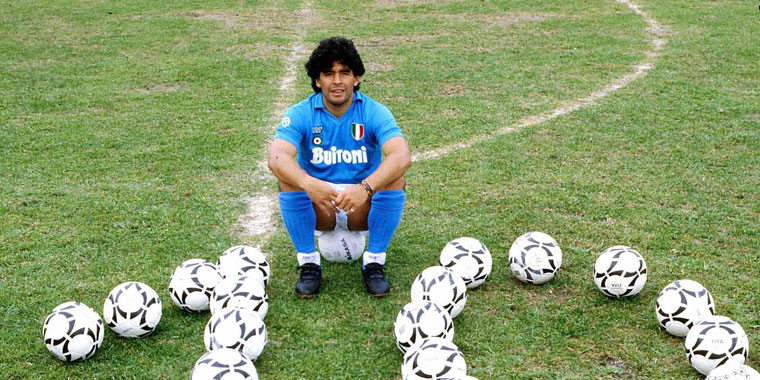
The following year, though, would not be kind to Maradona. Now visibly suffering from off-the-field activities and other issues, Maradona scored just 10 goals in 26 games in his final season in Italy. Limited to just 18 games in the league, it was an unhappy end to a legendary career in Italy.
He received over $70,000 in fines from the club due to various issues over his period of time in Naples, and also faced familial scandals. However, the end was brought around after a 15-month drugs ban in 1991. He left the club in 1992, serving his 15-month ban and being available once again.
The End Of Maradona The Player

Sadly, the later career of the legend would not be one to remember. He spent a single season at Sevilla, where he did play a key role in helping a young Diego Simeone establish himself in the European game. Staying for a sole season, he played well enough before desiring a return to Argentina.
Maradona headed back to Argentina with Newell’s Old Boys, scoring one goal for the club – a goal witnessed by Lionel Messi. You might have heard of him…
The 1994 World Cup
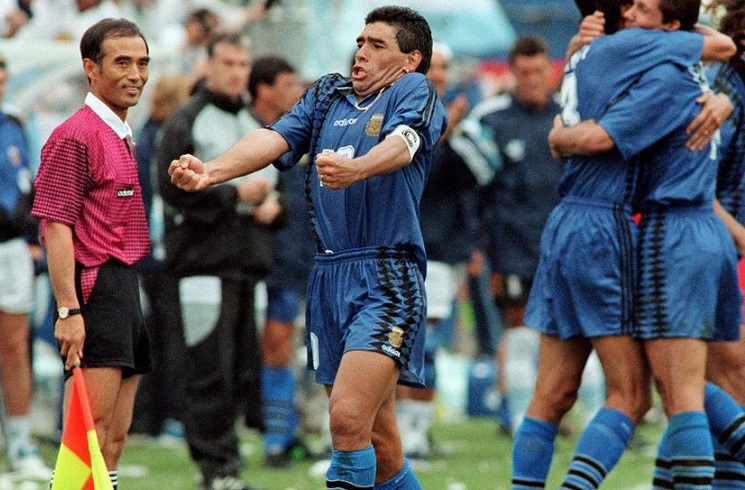
Maradona was in decent enough form (and still famous enough) to be called up to the Argentina squad for the 1994 FIFA World Cup. He headed off to the United States hoping to have one more shot at glory after missing out in 1990. The reality, though, was to be much more depressing for the player and his army of fans.
He played in two games, both games taking part in the Foxboro Stadium, Boston. Maradona scored a goal against Greece, but his celebration caught the public eye.
The Ignominious End

Maradona ran to the camera roaring and screaming, with his eyes massive and looking quite aggressive in the face. In all his career, he had never looked quite so aggressive in scoring a goal. However, while it would be his final goal in an Argentina shirt, he set up both goals in his final game.
In a 2-1 win over Nigeria, Maradona set up both goals with sublime free kick set-pieces. Sadly, the drug test he had to take after the infamous celebration resulted in a drugs ban for ephedrine doping. Maradona was sent home in disgrace from the tournament.
An International Career To Recall

Maradona would finish up in an Argentina jersey with 91 caps in the blue and white of his country. However, he also scored a whopping 34 goals in that time; an amazing return for a player who was never an out and out striker.
For Maradona, then, the end was to be a harsh one. For all his glory from his debut aged 16, 17 years later it would end in infamy as he was banned from taking part. Having been a winner and runner-up in the FIFA World Cup, though, his legend at home was secured forever.
Returning Home
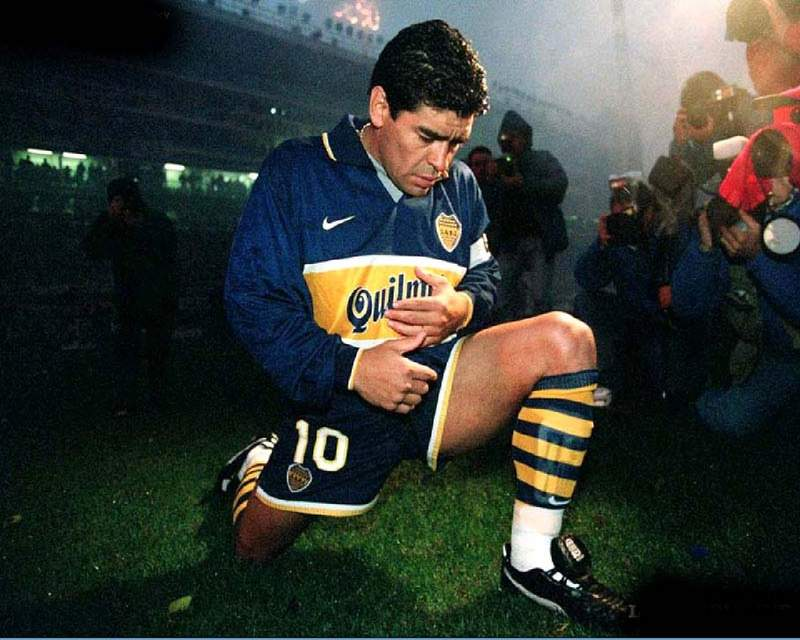
A single season with Newell’s came and went, before he returned to Boca Juniors for a final swansong. He played a pair of seasons in his beloved blue and gold kit, though he only played 31 games for the club across a three-season spell. Eventually, his legs caught up with him and having suffered various lifestyle and health issues, Maradona decided that it was time to call it quits.
His final game competitively came in 1998, before a 2001 testimonial that seen a World XI take on the Argentina national team. On the pitch, though, it was over.
Retirement Arrives
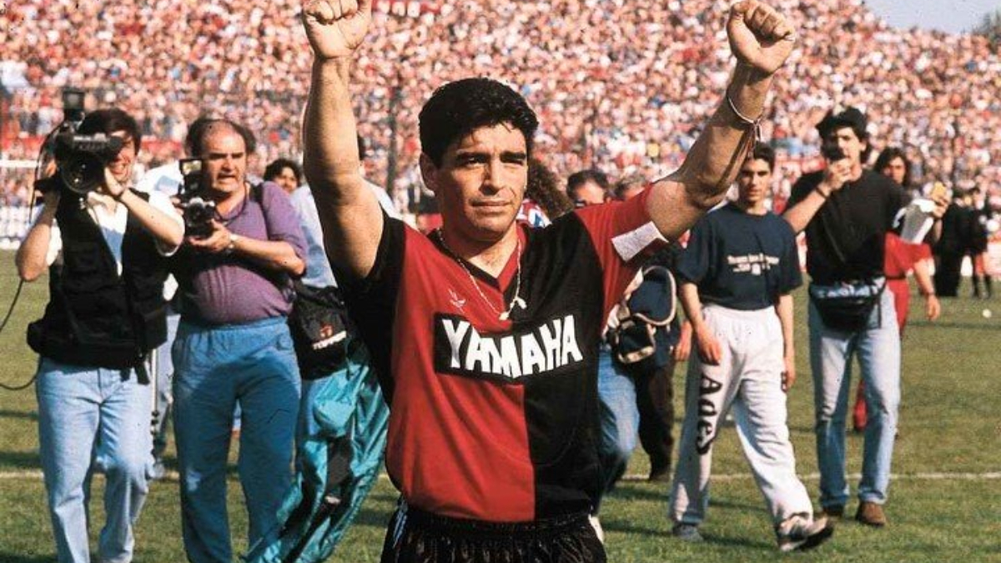
In 1998, then, the greatest player to ever pick up a football decided to call it a day from competitive football. Every club he played for, mostly Napoli and Boca Juniors, were effusive in their love and praise. For all his controversy and his madness, Maradona was a true genius; a livewire football with vision, technique, quality, and consistency.
In his career, Maradona took part in 588 games and scored a hugely impressive 312 goals. For Napoli, he scored 115 goals in just 259 games in the hardest league in the world at that point in time.
The Player Of The Century
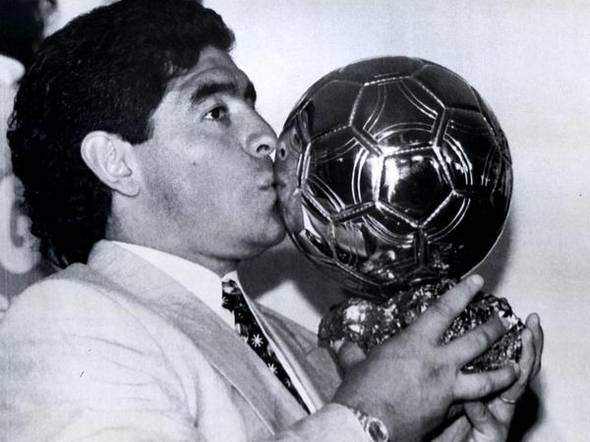
Two years after retirement and still well in the public eye due to numerous charity events and games, Maradona was awarded the 2000 FIFA Player of the Century award. He won the poll with some 53.6% of the vote, showing beyond all doubt that Maradona was the person seen by both pros and people to be the best of all-time during his era.
Indeed, many of his clubs decided to retire the No. 10 jersey in his memory, having become one of the truly elite players in the game deserving of an accolade.
The Estadio Diego Armando Maradona
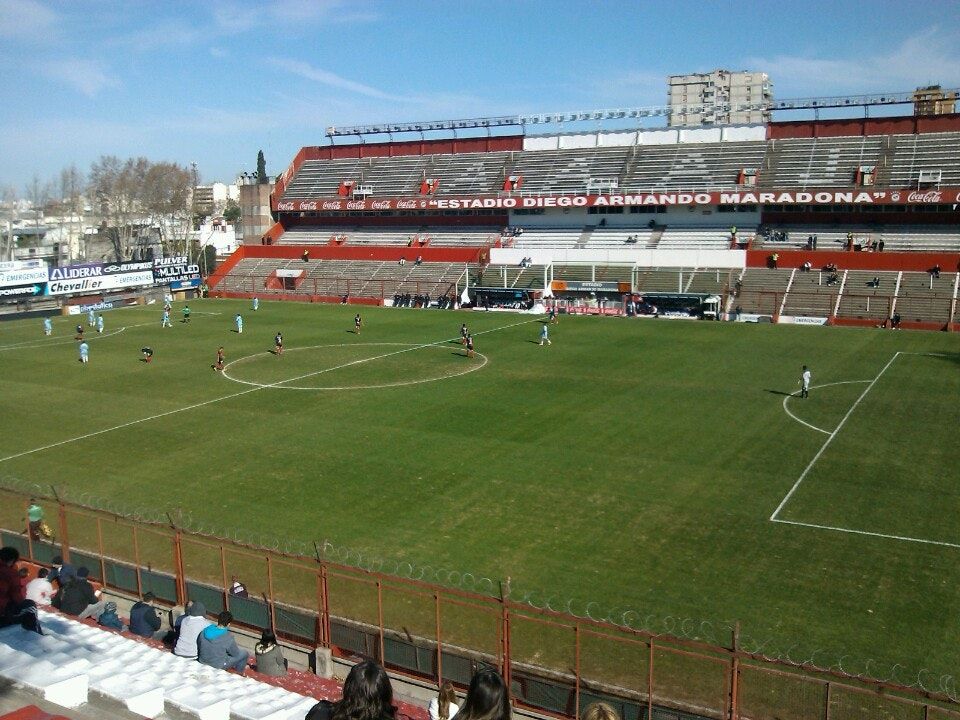
After his retirement, the accolades continued to roll in. One accolade that meant more than most, though, was for his first team, Argentinos Juniors, to rename their stadium. In 2003, they decided to name it after Diego, calling it the Estadio Diego Armando Maradona in his honour.
At this stage, Maradona began to enjoy some intriguing roles in football, not least coaching and managerial roles. He took part in a role with Boca Juniors, working as part of their presidency. Under his watch, the won the 2005 and 2006 titles and the 2005 Copa Sudamericana.
Managerial Attempts

From 1994, Diego had enjoyed taking part in some rare coaching projects. Alongside former teammate Carlos Fren, the duo took on various club jobs including the Corrientes job in 1994 and the Racing Club job in 1995, with minimal success.
Diego also enjoyed numerous spells managing abroad, including spells in charge of Al Wasl FC, Fujairah, and other teams such as Dorados in Mexico. His last managerial job, though, came in 2019 when he was unveiled as the coach at Gimnasia de la Plata. Despite challenges in charge of the club, he stayed on and was given a new contract to the 2021 seasons conclusion.
Argentina Manager

However, his most impressive international results came as manager of the Argentina national side. He was named Head Coach in November 2008, winning his first game against Scotland in a Hampden friendly, winning 1-0.
He took his country to late, dramatic qualification for the 2010 FIFA World Cup, wining their last two games to avoid a play-off and to take part. However, he took the team to the FIFA World Cup in South Africa, enjoying wins over Nigeria and South Korea as well as beating Greece 2-0 to escape the group perfectly.
The End With Argentina
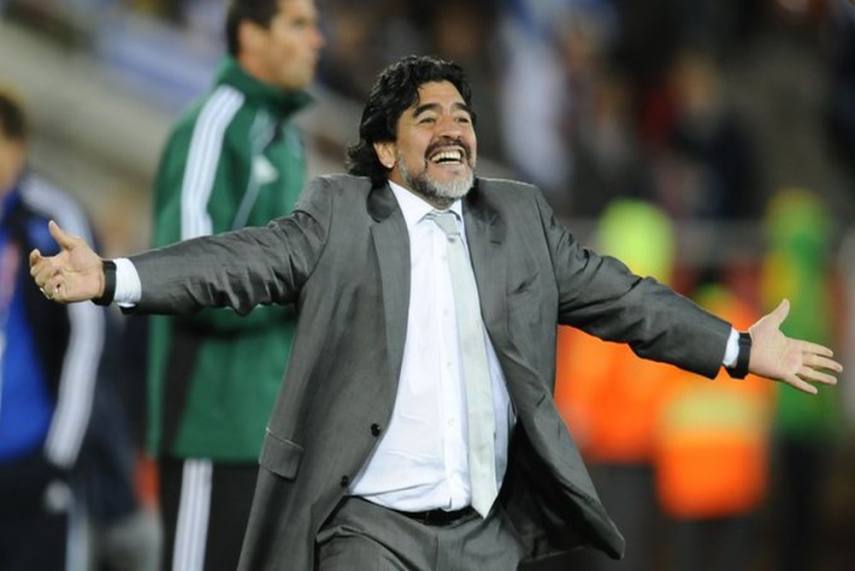
After defeating Mexico in a 3-1 win, Maradona faced his old foe in Germany in the next round. In a quarter final disaster, though, Argentina were thrashed 4-0 and it seen the club head out of the tournament. Maradona soon expressed his likely escape from the national team job.
Despite being offered a new deal, he walked away from the job after an acrimonious departure. For Maradona, it was an unfortunate end to his passionate career in the game. Despite managing at club level afterward, the Argentina national team job was comfortably his largest role.
Illness And Health

Sadly, we have not spoken much about Maradona’s various health issues. Such problems have been well-documented, and we instead wished to celebrate a special life and a truly interesting man. Sadly, he endured many illnesses later on in his life which would cause many problems.
Maradona had gone through many health issues towards the end of his career, including ballooning in weight massively after his career finished. However, as ever, Maradona fought back against illness and weight gain and would often find a way out the other side to continue living in the limelight.
A Family Man
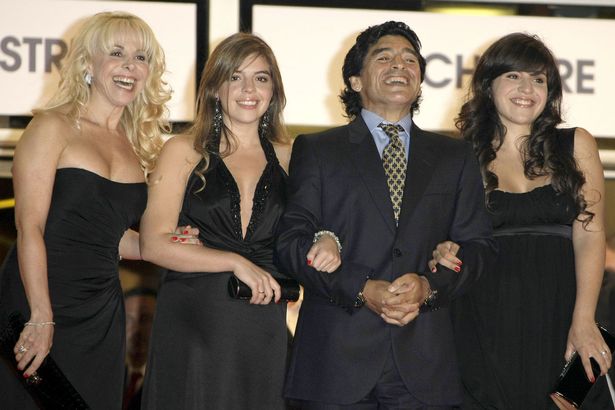
Maradona was also known to be very close to his family. He married his long-term partner Claudia Villafane in 1989, and together the had two daughters, Dalm Nerea and Gianinna Dinorah. He also became a grandfather in 2000. Sadly, he and Claudia divorced in 2009, though were said to have ended on friendly enough terms.
More controversially, though, it took years of court cases for Maradona to admit he was the father of his son, Diego Sinagra. Refusing to undergo DNA tests, he admitted his parentage and they met for the first time in a golf course on 2003 when Maradona was playing.
Illness And Issues
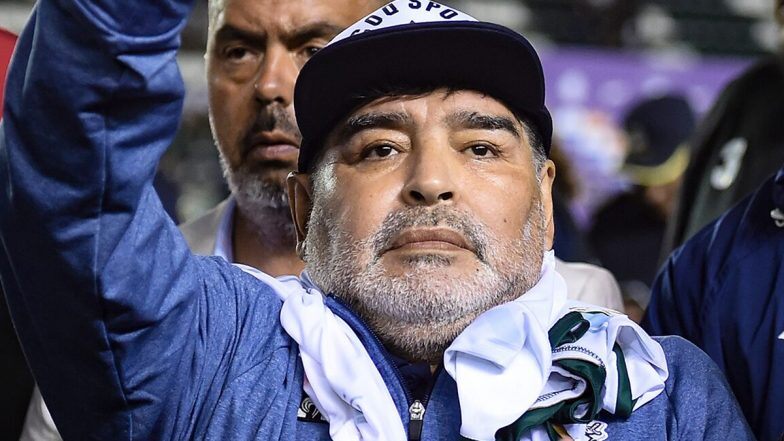
Sadly, Maradona continued to suffer from on-off health issues for much of his adult life and he was treated for various issues. He suffered from cocaine issues from the 1980s until the early 00s, and also suffered from obesity post-career. He underwent gastric bypass surgery in 2005, and he retained a thinner figure for much of the remainder of his life.
However, issues including hepatitis, alcohol abuse, and suffering from hernias. His health continued to become problematic, and the issues came to a head in 2020 when Maradona was rushed in to hospital.
Death

In November 2020, Maradona was rushed into hospital in La Plata, with emergency brain surgery to handle a subdural hematoma. Surgery was deemed successful, but doctor visits would be needed. Tragically, on the 25th November 2020, Maradona suffered cardiac arrest and died at his home in Diqu Lujan, Buenos Aires.
His death was met by days of national mourning in Argentina and across Naples, showing the love that the great man had for him across the world. Many mourners attended, with tens of thousands of people attending his public funeral gathering whilst a private event took place for his closest family.
Diego was buried next to his parents in the Bella Vista Cemetery. Rest in Peace, Diego; the world would have been a far less exciting, colorful place without your presence.

